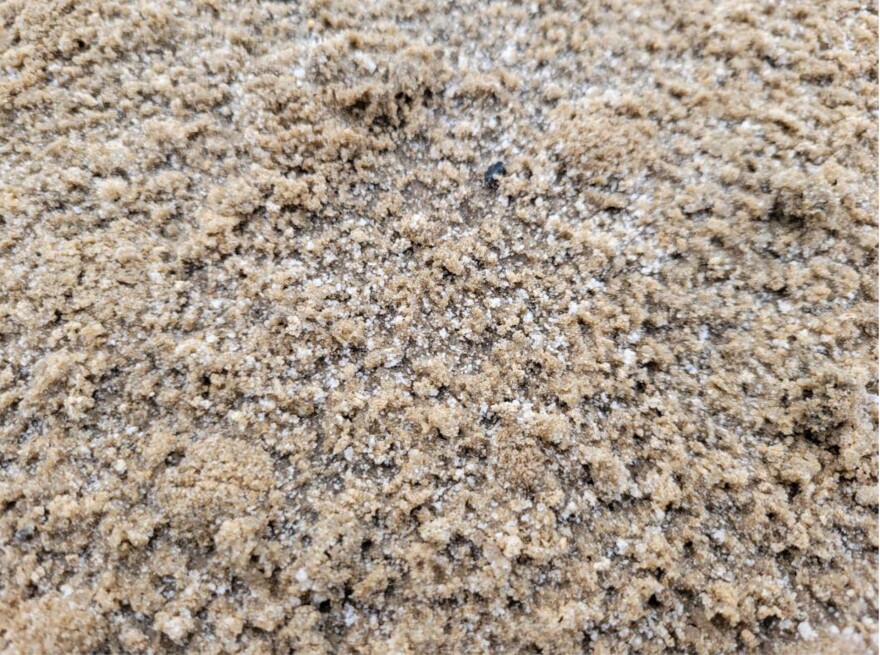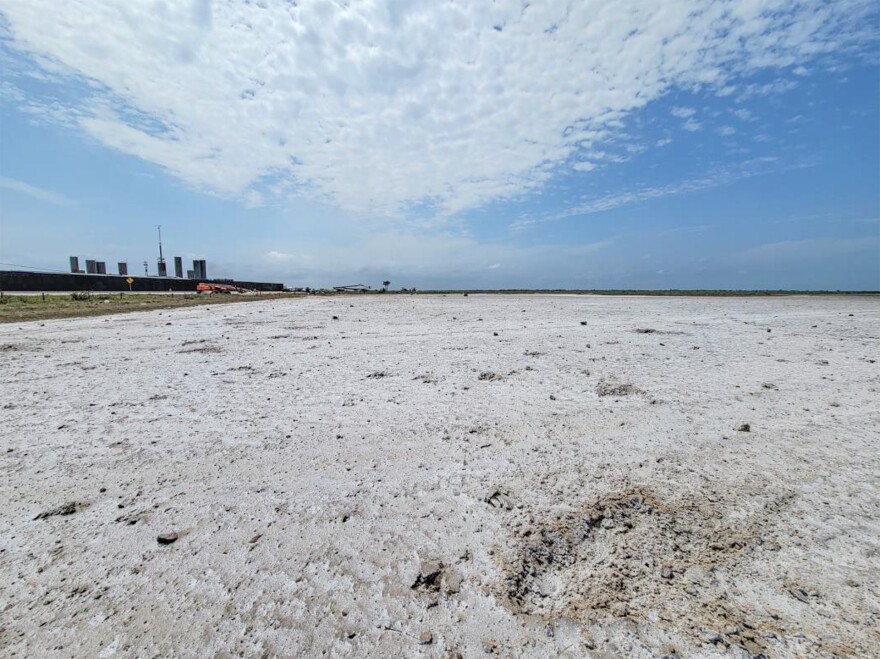Last Thursday, SpaceX’s South Texas facility was awash in noise and fire, as crowds gathered in South Padre Island and Port Isabel to watch Starship’s first orbital launch.

It was the largest and most powerful rocket ever made, standing at around 400 feet tall. Four minutes into the launch, SpaceX detonated the rocket after the SuperHeavy booster failed to separate from the Starship as planned.

The launch destroyed the company’s launch pad, spreading concrete up to three quarters of a mile away. Cameras left by YouTubers were either knocked down or destroyed in the rumble, along with some of the fence surrounding the launch pad’s road-facing property.

Particulate matter from a debris cloud of sand and soil created by the launch fell in Port Isabel, according to the Cameron County Emergency Management Division.

The U.S. Fish and Wildlife Service (USFWS) documented that the debris cloud deposited material as far as six-and-a-half miles north of the launch pad. The agency said in a statement that the debris cloud was made of pulverized concrete.

The launch pad’s destruction could be seen in the mudflats and dunes south of it and in the algal flats to the north. Broken concrete — some pieces the size of golf balls, others the size of car engine blocks or larger — was spread out over nearly three-quarters of a mile in some directions.
Craters from large pieces of concrete were as large as six feet across and a few feet deep. Some pieces hit the ground so hard they were submerged in the sand, leaving only an empty crater with rebar jutting from it.

SpaceX’s video of the launch confirmed the extent of the debris spread, showing some concrete launching into the Gulf of Mexico.

Vegetation within a few hundred yards of the launch pad was singed. A little more than a quarter mile south of the launch pad, a fire burned about three acres, charring a quail’s nest.

Salt-like particulate matter could be seen all over the mudflat south of the launch pad.

On the algal mudflats north of the launch pad, concrete, metal, the salt-like particulate and rebar could be found more than half a mile away. In total, according to USFWS, around 385 acres of land was affected by debris.

“You get in there and it looks like a literal bomb went off,” said Justin LeClaire, a conservation biologist with the Coastal Bend Bays and Estuaries Program.
LeClaire studies the shorebirds that live in and migrate to Boca Chica, including federally protected plover species, and was one of the first to survey the area after the launch.

He documented that debris landed just a few feet away from a Snowy Plover pair nest scrape. LeClaire also found several federally protected Piping Plovers foraging around debris on the algal flats north of the launch pad.

If SpaceX starts launching routinely — as it plans to — wildlife may leave the area around the launch site.
“If these major disturbances, in addition to actual damage to the habitat, happen consistently every month, every week, birds and other other wildlife are not likely to use that habitat,” LeClaire said.

SpaceX CEO Elon Musk tweeted that the company believed the launch pad would survive Starship’s thrust, based on data from February's static fire test of the SuperHeavy booster. The test only used 50% of the booster’s thrust power. In the same tweet, Musk said SpaceX was developing a water-cooled steel plate to go under the launch pad but it wasn’t ready in time.

But proven launch infrastructure like flame trenches and water deluge systems, both of which could have prevented the debris and damage at Boca Chica, seem to not be an option for Starship.
Musk tweeted in October 2020 that he aspired to not have a flame trench in Boca Chica.
“But this could turn out to be a mistake,” he said.

Eric Roesch, an environmental compliance specialist and author of the blog ESG Hound, said this forgoing of more extensive launch infrastructure may have been intentional.
“It sure seemed like the decision to not do these very basic channels or flame protection or systems that you see everywhere else was a matter of convenience,” Roesch said.
SpaceX initially had plans to extend its launch pad facility another 17 acres into the wetlands surrounding Boca Chica Beach. But after the company gave conflicting and insufficient information, the Army Corps of Engineers pulled its permit application for the project.

Because SpaceX is surrounded by state and federally protected lands, Roesch said building launch infrastructure unique to SpaceX’s needs is a massive civil engineering project: it would take years to receive permits for and to construct something he believes SpaceX wasn’t willing to wait for.

On the launch pad’s destruction itself, Roesch points to the environmental assessment SpaceX completed for the Federal Aviation Administration (FAA), which used 2019 data that underestimated how loud the launch would be; and the Starship SN11 test for how far the debris would spread. What the company called a successful launch actually spread as much debris it had predicted for a full-on explosion on the launch pad.
“I think that probably illustrates better than anything else how woefully and fundamentally inadequate the entire environmental review process is,” Roesch said.

The FAA has grounded the Starship program until its mishap response plan is completed. It requires SpaceX to work with state and federal agencies to remove the debris and survey the damage.
In a statement, the agency said it will make sure SpaceX complies with environmental regulations.
Read more about SpaceX and RGV news:
SpaceX Satellites Are A Problem For Astronomers
Housing costs skyrocket as SpaceX expands in Texas city
SpaceX Rocket Launches With Astronauts Aboard
Baby Yoda Hitches A Ride On SpaceX Capsule



